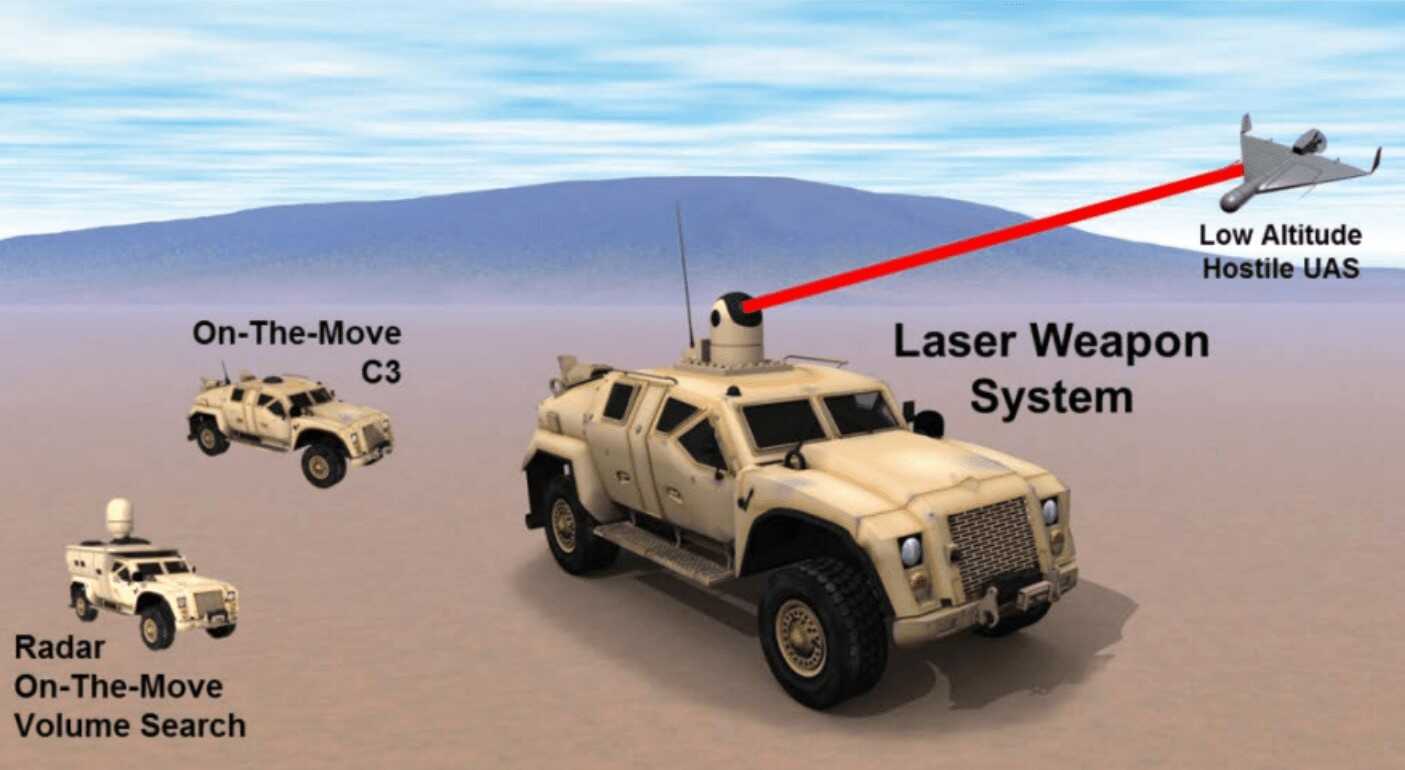
Trucks with frickin’ laser beams on their heads! (Photo: Office of Naval Research)
The Marine Corps is rolling out plans to integrate anti-drone directed energy weapon systems — lasers — on combat vehicles. Along with Stinger missile systems, the Marines are looking for a way to take out unmanned vehicles. Specifically, they want a way to combat remote-control fighting machines.
Weaponized drones pose a serious threat to the soldiers of the future. The unmanned skies over battlefields will become more and more crowded as the tech picks up speed. The Marines are concerned about other major players including Russia and China, in addition to increasingly-complex weaponized commercial drones.
“When we see near-peer competitors, the development that’s going on in Russia and China, it is really waking us up to what we’re going to have to do in the future,” said Lt. Gen. Robert Walsh. Walsh, speaking at the Directed Energy Summit, is the deputy commandant of the Marine Corps for combat development and integration.
“So we look at our air defense capability as certainly a weak area,” said Walsh. We have not upgraded in a long time because we haven’t had to deal with that in the operating environment we’ve been in.”
See Also: U.S. Forces to Fight ‘Hybrid Armies & Little Green Men’
For now, the Marines are focusing on laser weapons for smaller drones, and will use Stinger missiles for larger threats. However, if laser defense systems become powerful enough to take out heavy drones down the line, the Marines will consider entirely energy-based defenses.
It’s not hard to picture how dangerous a small drone could be. A drone armed with an explosive payload could be used as a flying kamikaze fighter. Even a reconnaissance drone could provide critical strategic information to enemy forces.
Networking is a key component of the defense system, as the system relies on support systems to process data from mobile radar stations. The stations transmit radar info to support planes coordinating with the Direct Air Support Center which in turn informs Marines on the ground about airborne threats.
“Get them the feed so they can see it, now they know the target is coming and they can shoot it with a Stinger,” Walsh said. “Compared to now where the Marines send someone out with binoculars to look for threats in the air.”
“The laser would tie right into that.”
The U.S. Army is also working on mobile laser defense systems. Right now they’re separate programs. Depending on how the Army system works out, the Marines may consider using Army’s system for Marine forward operating bases.
With the Marines looking to add laser weapon systems to their defense network, one thing’s clear: we’re living in the future.

The problem is not defeating them it is detecting them, fixed wing drones have a small signature for all sensors, sound, elint, visual, and radar. They can go EMCON when miles away from the target, or for the entire mission, so zero ELINT signature when close. The sound signature for a front prop well designed fixed wing drone is hard for the human ear to hear past 300 yards unless in the middle of the desert, and the frequency can be changed very easily sound signatures in this band are not very effective. I could continue …
I have a fair amount of professional experience with drones, I took one onto theater that my team developed and built. Multicopters are far easier to detect as their sound and approach speed is such that you have an awareness within an operational envelope that you can detect and respond with a weapon, given the amazing worldwide popularity of copters hopefully our foes will send them at our defenders.